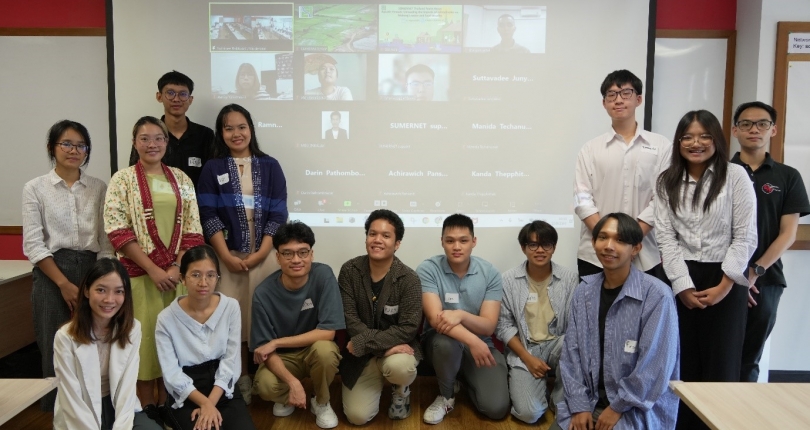Unraveling the danger of microplastics in the Mekong Region
The Mekong River is increasingly threatened by plastic pollution, which leads to ecosystem degradation and endangers the livelihoods of millions who depend on it. To address this challenge, on August 11, 2024, SUMERNET Young Professionals in Thailand brought together youth leaders and early-career professionals across Thailand for mutual learning, networking, and finding pathways for addressing the issue of microplastics in the Mekong Region under the topic "Aquatic Threads: Unraveling Microplastics on Mekong's Water and Food Security."
Hidden danger of microplastics
While much attention has been paid to microplastics (tiny plastic fragments less than five millimeters in size) in the oceans, the situation in freshwater systems, including the Mekong River, has received a different focus. These pollutants can infiltrate land, air, water, and food webs, with long-term consequences for nature and human health.

Dr. Pattira Kasemsiri, a researcher from Mahasarakham University, presented findings from her research on the Chi River, a Mekong River tributary. Her research revealed levels of microplastics accumulating in fish populations, which can then transfer to the food web.
In Vietnam, downstream areas in the delta region showed a massive accumulation that was more intensive than the Mekong upstream in Thailand, highlighting the transboundary pollution that needs collective responsibility and action across all six Mekong countries.
From research to policy: Tackling Thailand’s plastic regulations
Punyathorn Jeungsmarn, a plastic policy researcher from the Environmental Justice Foundation (EJF), highlighted the necessity of international and local regulations against plastic pollution, identifying the Global Plastics Treaty as an essential tool to overcome plastic difficulties. However, he noted that the treaty, which aims to control plastic from production to disposal, is still only 10% complete. Additional problems remain that need to be resolved globally, such as the oversupply of plastic, public awareness, and the lack of plastic regulations. He further stressed Thailand's need for stronger rules due to the country's weak plastic management policies.

Media as a tool for change
Another primary focus of the event was the role of the media in simplifying complicated environmental issues. Patiparn Boontarig, a well-known Thai filmmaker for his environmental film, underlined how storytelling bridges the gaps between academic research and public involvement. He clarified that visual media has the power to arouse emotional connections, which helps everyone understand complex information like microplastics. The accessibility of scientific knowledge can be improved by new technologies, such as artificial intelligence, virtualization, and satellite imagery, to make it easier to understand. In addition, collaboration between researchers and media creators is essential to ensure the materials are accurate and engaging.

Simulating real-world solutions: "Dealing with the difference."
"Dealing with the difference," an interactive session, allowed participants to engage in a role-play exercise that simulated the complexities of addressing microplastic and water pollution. This exercise demonstrated how social factors, including authority, power, and inequality, influence environmental impacts and how stakeholders struggle to collaborate to develop reasonable solutions. Participants took on the roles of various stakeholders, including local communities, government officers, researchers, and commercial representatives, to experience firsthand the challenges of negotiation and decision-making in the real world.
Building a network to bring about change
The last session focused on the future of the SUMERNET Young Professional (SYP) and Young Leader networks. The youth shared their expectations and ideas for strengthening collaboration in the future. They emphasized the importance of local well-being and policy engagement and encouraged the young generation to continue their environmental advocacy and policy efforts.
This piece reflects on the event hosted by the SUMERNET Thailand Youth Nexus to highlight the pressing issue of microplastics in the Mekong Region and underscore the importance of research, policy, media, and youth engagement in driving meaningful change. By bringing together diverse voices and perspectives, the event inspired participants to take action, moving from awareness to tangible solutions for a more sustainable future for the Mekong Region.
*Photo 1: Panel discussion on the microplastic situation by Dr. Pattira Kasemsiri.
*Photo 2: Panel discussion on plastic policy by Punyathorn Jeungsmarn. Photo: Variya Plungwatana / SEI Asia.
*Photo 3: Panel discussion on simplifying the microplastic crisis by Patiparn Boontarig.
 By
By 



 Read more about SUMERNET
Read more about SUMERNET
